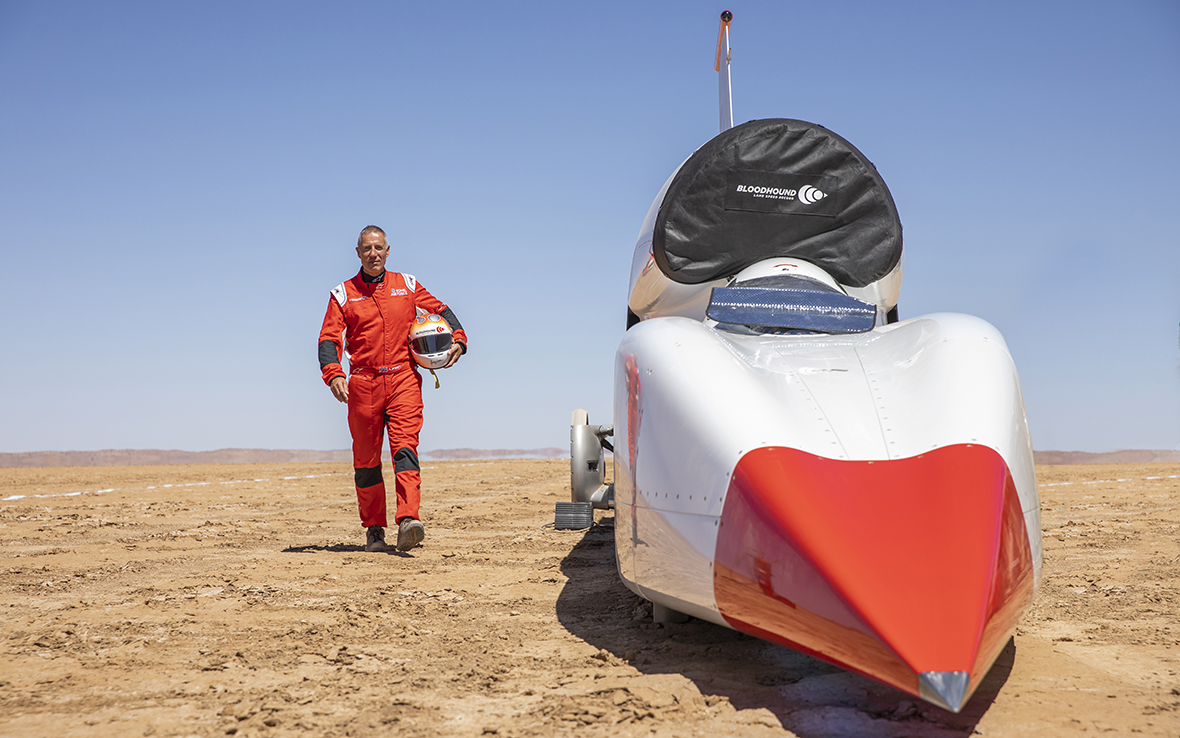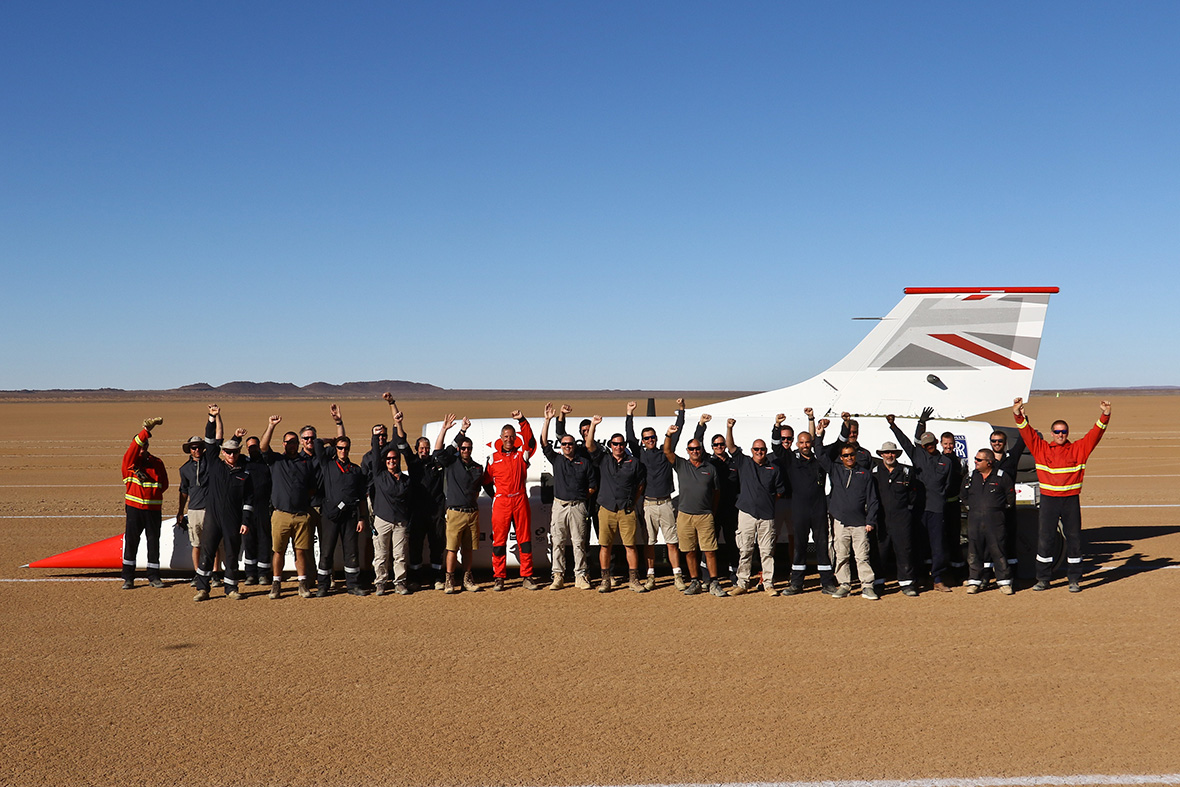Ever since the wheel was invented and (much later)someone had the bright idea to attach four of those wheels to an engine and steering wheel, there have been drivers hell-bent on going faster than anyone else…”if it moves, it needs to be moved faster”.
These land speed records have been set and broken using all possible power sources, starting with the electric motor, followed by variations on the theme of steam power, the gasoline engine, the jet engine and somewhat futuristically, the eyeball-rattling rocket engine.
Of course, many of these drivers got their first taste of unbridled speed using only good old-fashioned gravity…soapbox derby racers. These quixotic home-builds are still raced in annual events, both here in the US and other countries fixated on four-wheel thrill-chasing.
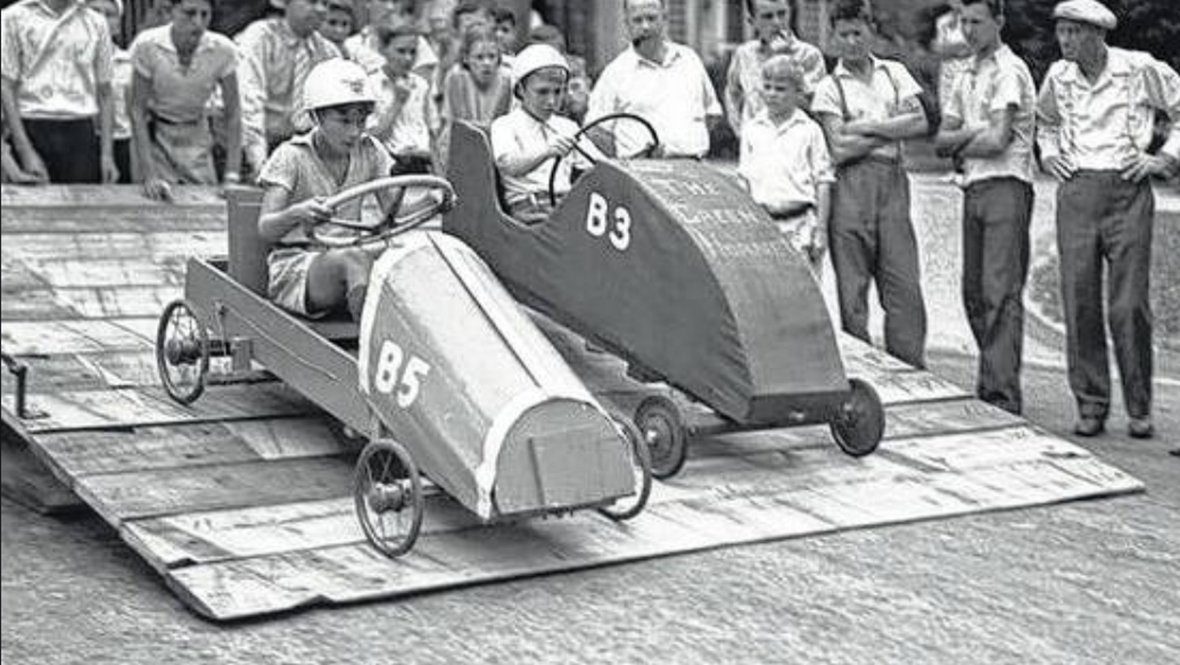
Among the first to claim a motorized “speed record” was a Frenchman (yes, the French built cars, as well as balloons and aeroplanes) by the name of Gaston de Chasseloup-Laubat (I’ll bet his nickname was Gussy). Gaston steered a car built by Jeantaud, the model was the “Duc”. The electric-powered Duc achieved an eye-watering 39mph in 1898.
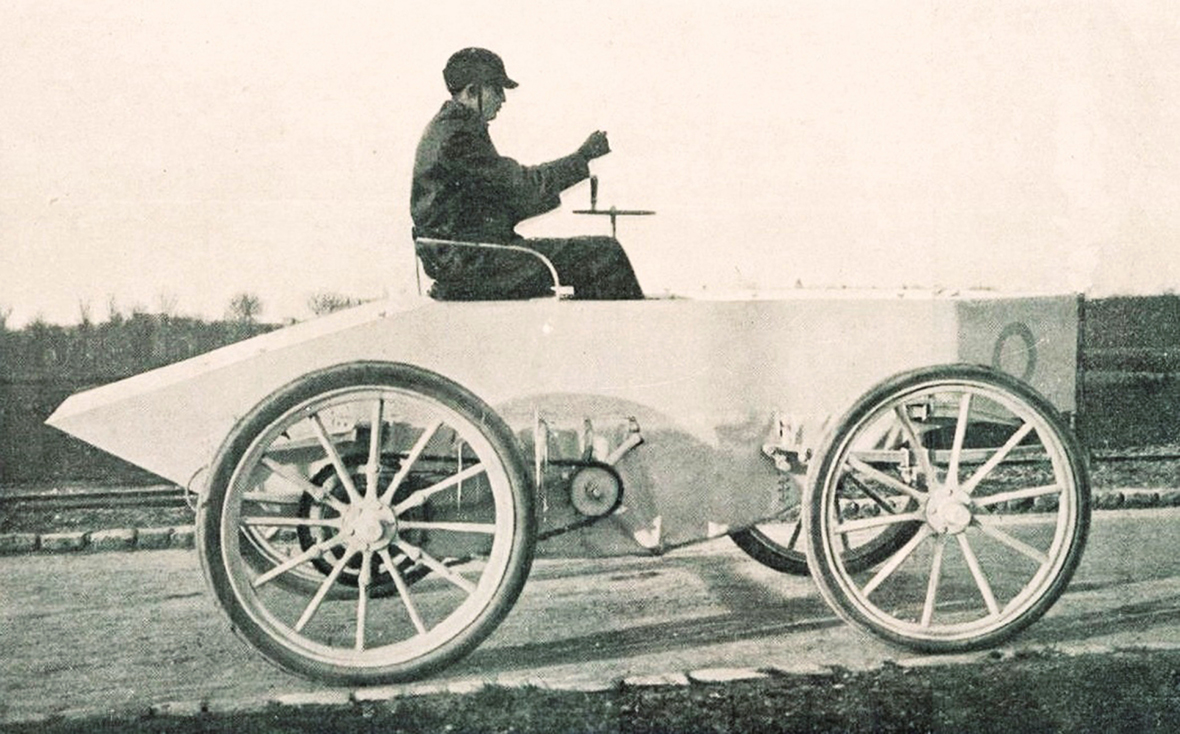
The subsequent speed records quickly fell as machines and drivers came together to improve on streamlining, performance and plain nerves of steel. The next leap forward after “Gussy Laubat” set the land speed record, was recorded by another early auto manufacturer, Camille Jenatzy. Jenatzy challenged Laubat to a competition to see whose car was the fastest. The two went back-and-forth until, late in 1899, Jenatzy created his “voiture electrique”, La Jamais Contente, or “The Never Satisfied.” It was the first vehicle to exceed 100 kilometers per hour — faster than scientists of that era thought the human body could withstand. That record, just under 66 mph, would be the last record held by an electric car.
There was a time when “streamlining” was nothing more outrageous than turning a peaked driving cap back-to-front and holding it down with a leather strap attached to a pair of bug-eyed goggles. Nowadays it’s fighter pilot helmets and sinister-looking darkened visors, coupled to the driver’s quilted torso via various cords and tubes.
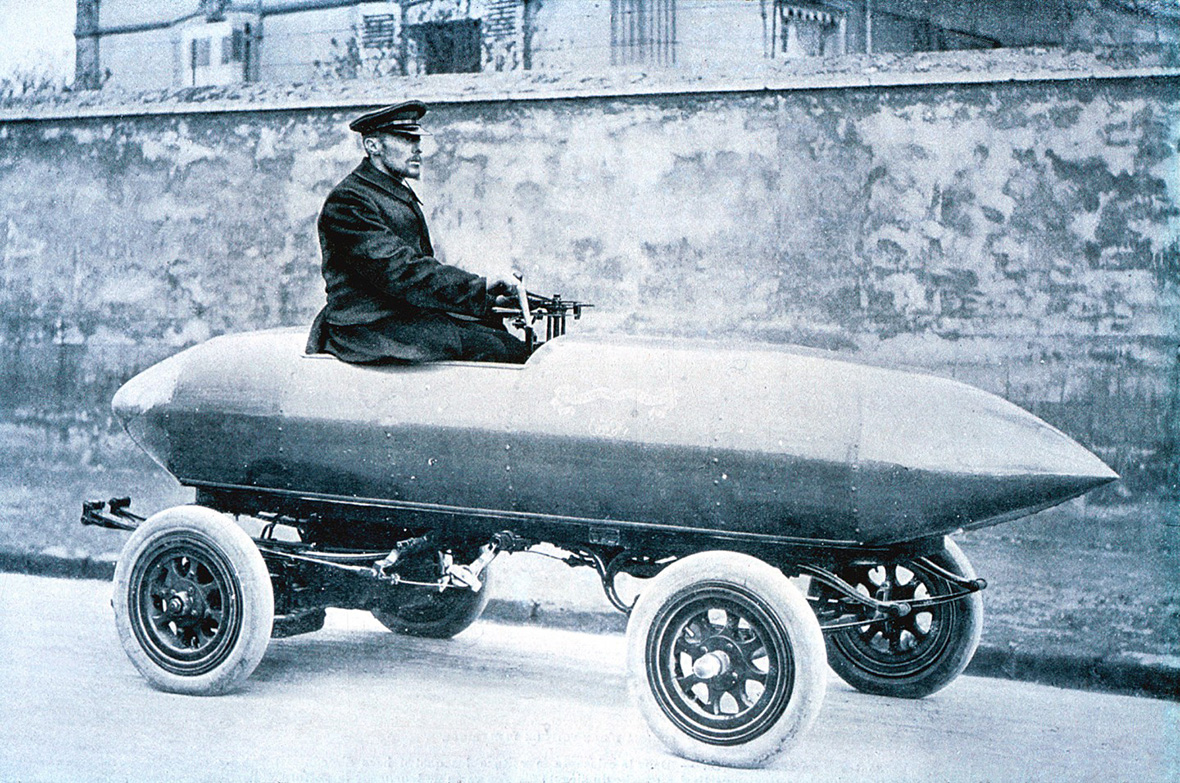
Probably the next milestone in speed demon history was the first car and driver to hit 100mph and this happened on January 31st1905 in Ormond Beach, Florida. Arthur MacDonald, from the UK, drove a 90-horse-power Napier owned by a Mr S.E. Edge, to a speed of 104.65 mph in a flying mile. Napier automobiles were originally luxury cars imported from the UK to the US, however, Napier was acquired by a Massachusetts USA company prior to this land speed record mark.
This was also the beginning of the era of cars, being owned by wealthy individuals, who were either too rich or too scared to personally handle one of these increasingly dangerous driving contraptions…therefore surrogates were hired to gain the fame and glory at someone’s else’s expense…not a bad deal.
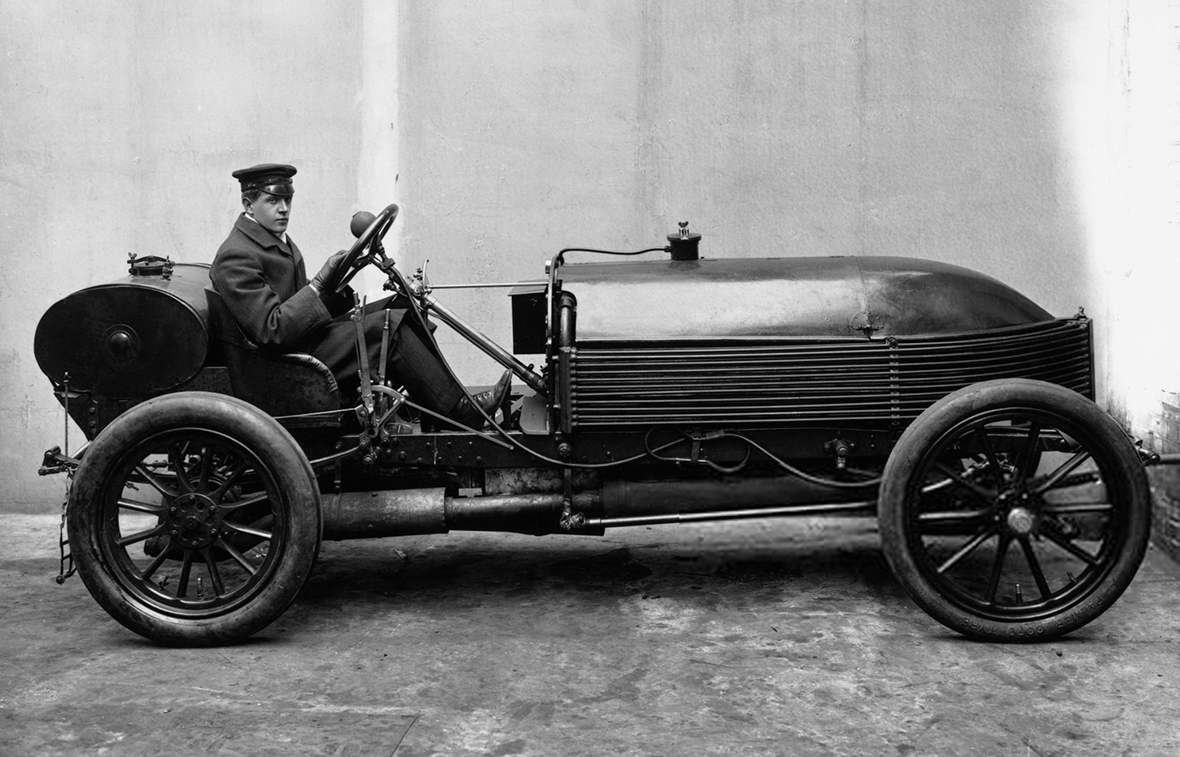
Bizjet Advisor’s editorial space doesn’t allow for a compendium of speed records, fascinating though this history has been, so far.
Therefore, in somewhat significant speed ascending order, we have the 200mph record, set by Major Henry Segraveon March 29th1927. An estimated crowd of 30,000 spectators gathered to watch Major Segrave set a new World Land Speed Record by driving the thousand horsepower Sunbeam “Slug” at an average speed of 203.79mph, on the sand, in Daytona Beach, Florida.
Somewhat ironically, sand is generally considered to be a driver’s sworn enemy. However, when wet and sun-baked, compressed beach sand takes on the consistency and feel of a bocce court…without the steel balls to contend with.
We should also mention that ‘Federation Internationale Automobile” (FIA) recognized speed records must be the average speed of two runs performed on the same day.
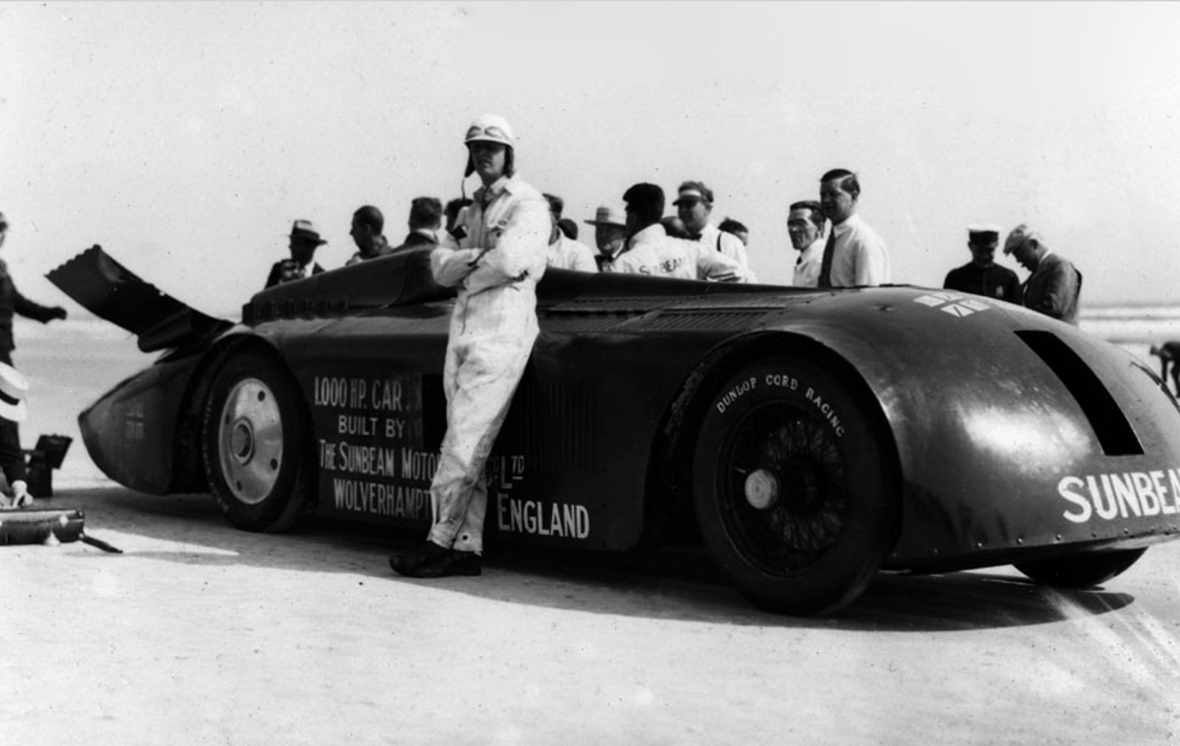
The official 300mph land speed record was set in 1935 by Sir Malcom Campbell, in the Railton Rolls-Royce Blue Bird. Campbell would be the first of many drivers to set a record at the Bonneville Salt Flats, Utah, a flat desert area with ideal driving conditions. These desert locales have been utilized ever since for speed record attempts, due to their almost limitless flat and consistent ground conditions.
The Railton-derivative land speed record holders were the last to be powered by conventional internal combustion engines. The need for speedwould propel these speeding monsters into the jet age and the era of the 400mph, 500mph and 600mph records was ushered in by an American, Craig Breedlove. Breedlove’s first attempt, at 407mph in the Spirit of America, was originally disqualified (where have we heard that phrase before?)by the sport’s governing FIA body because Breedlove’s car had only three wheels…at 407 miles per hour, who the hell is counting wheels?
The governing FIA chaps apparently took a break for lunch, then relented… and Breedlove became the proud topper of 400 miles per hour, followed by his astonishing repeat chronological performances at 500 and 600 miles per hour.
Other intrepid speedsters in the five to six hundred miles per hour club include Art Arfons, Richard Noble and Gary Gabelich…all were pounding the mirage-strewn deserts of the western US.
The jet-engined automobile, with even more horsepower, would next be urged into a full gallop by the “Brit” Andy Green, in Thrust SSC (SuperSonic Car). The venue, in 1997, would once again be the Bonneville Salt Flats in Utah (there must be something in that salt).
Bizjet Advisor’s publisher and many of his good friends are no strangers to supersonic speeds (we were all fighter pilots in the Royal Air Force). However, going supersonic…on four wheels ?
Thrust SSC broke the sound barrier and achieved 763 mph. This speed bump was possible thanks to a duet of Rolls-Royce Spey fighter jet engines There is plenty of online video showing Thrust SSC with the unmistakably familiar sonic-boom shockwave passing over its sinister-looking body…did I also mention the BOOM?
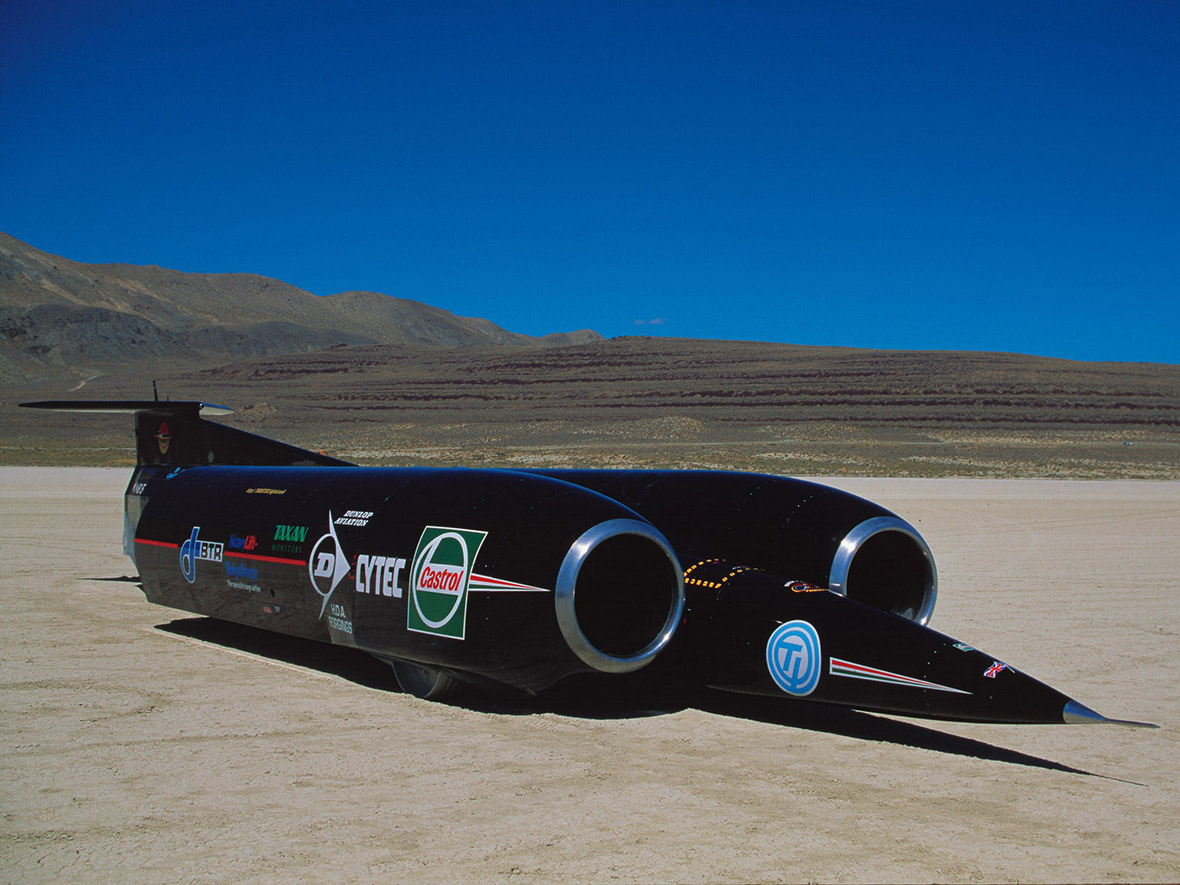
And now, ladies and gentlemen;
Fast-forward (pun intended) to late 2019 and Bloodhound LSR(Land Speed Record) is gearing-up for an attempt to nudge the land speed record to over 800mph and the target speed is… 1000mph !
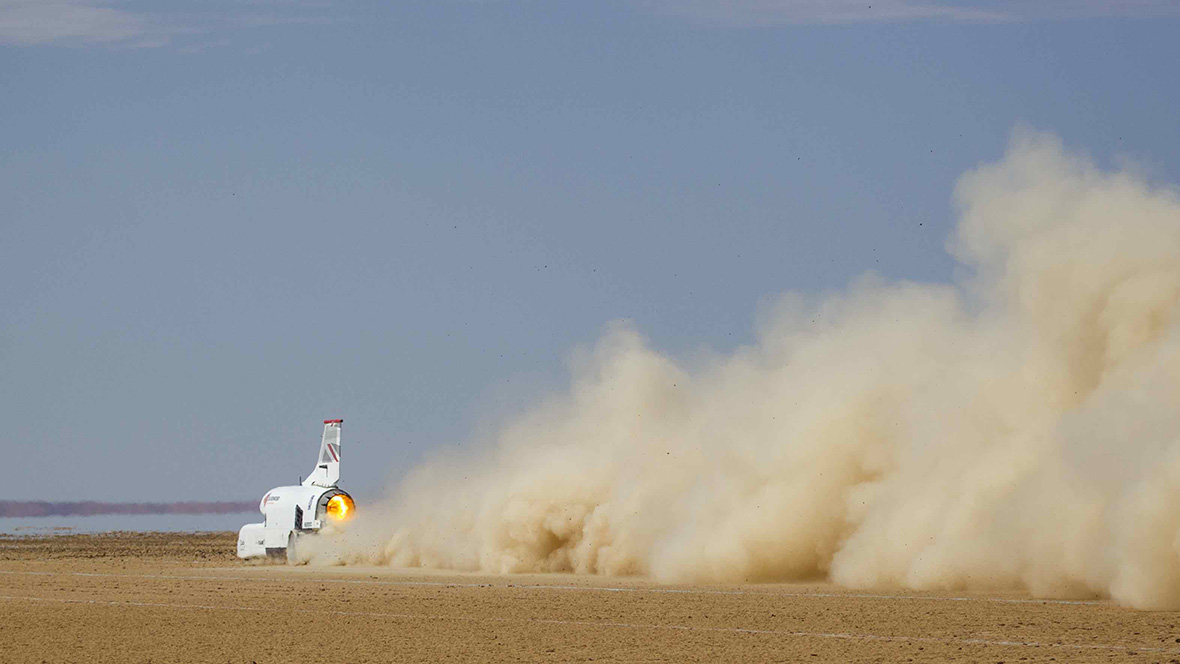
The initial low-speed testing (an understatement) of Bloodhound’s handling characteristics was successfully completed at a former Royal Air Force base in the picturesque countryside of Cornwall, UK, back in 2017. The last time I saw this bucolic area of the UK was from a surfboard, off the beaches of Newquay, back in the early ‘70’s.
The latest tranquil desert landscape to be rudely awoken by one of these fire-spewing monsters is on the edge of the Kalahari Desert…Hakskeenpan, Northern Cape, South Africa. The Bloodhound team of thirty talented individuals, have de-camped to this expansive and remote desert in order to evaluate the high-end performance of Bloodhound. In other words, Bloodhound needs a lot of very flat and stable real estate to accelerate…then stop !
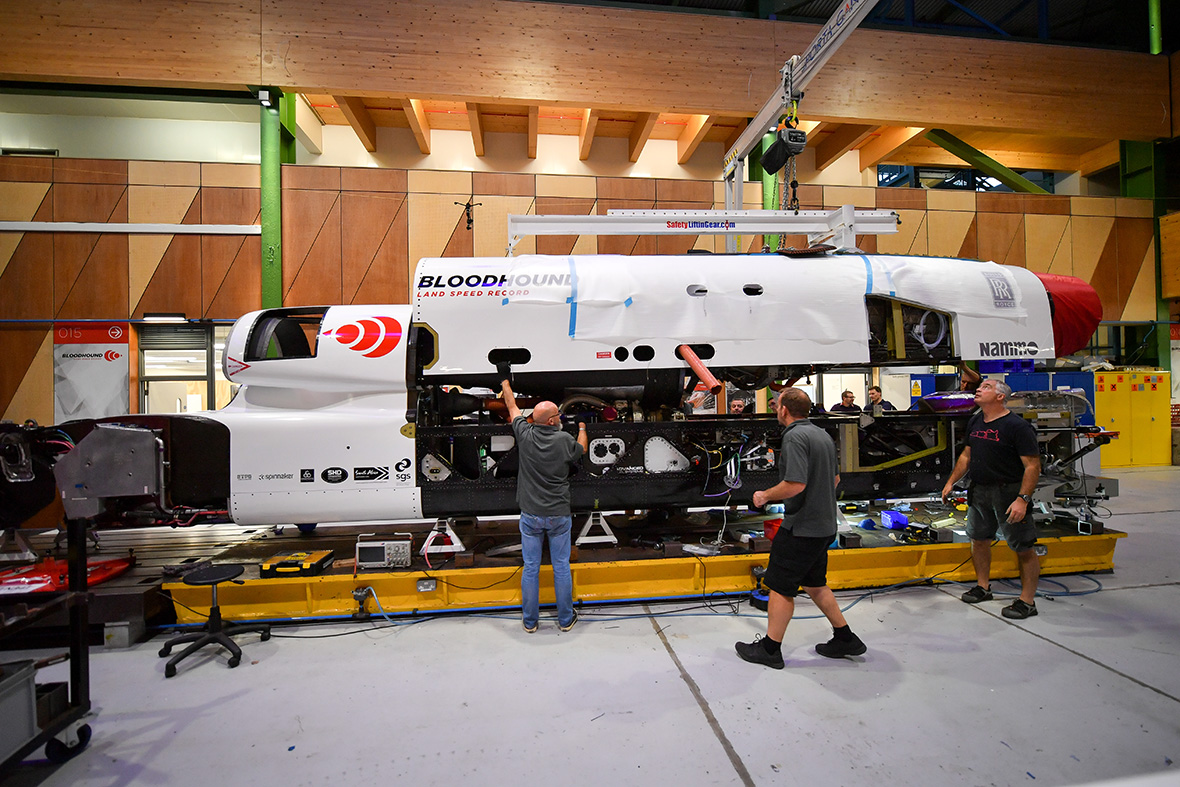 High speed testing is a series of carefully pre-planned runs, each builds speed on the last and a series of braking tests will provide the data on the desert’s rolling resistance, the effectiveness of the brake chutes, air brakes and wheel brakes…vital information that is impossible to gather using simulation alone. This data is coupled with the data from one hundred and fifty four air pressure sensors that cover the car’s sculpted bodywork. This information will be used to validate the Computational Fluid Dynamics study, lead by Swansea University in the UK…lots of unsung heroes in this endeavor!
High speed testing is a series of carefully pre-planned runs, each builds speed on the last and a series of braking tests will provide the data on the desert’s rolling resistance, the effectiveness of the brake chutes, air brakes and wheel brakes…vital information that is impossible to gather using simulation alone. This data is coupled with the data from one hundred and fifty four air pressure sensors that cover the car’s sculpted bodywork. This information will be used to validate the Computational Fluid Dynamics study, lead by Swansea University in the UK…lots of unsung heroes in this endeavor!
Bloodhound deploys two engines, sitting ‘piggy-back style’, under its aerodynamically-formed body panels. One engine (on top) is the same engine, (the Euro Jet EJ200), as is fitted to the current British front-line Typhoon Euro Fighter jet. This afterburning (re-heat) jet engine is similar in concept to the earlier engines on Thrust SSC, but it is a couple of generations newer in design and materials.
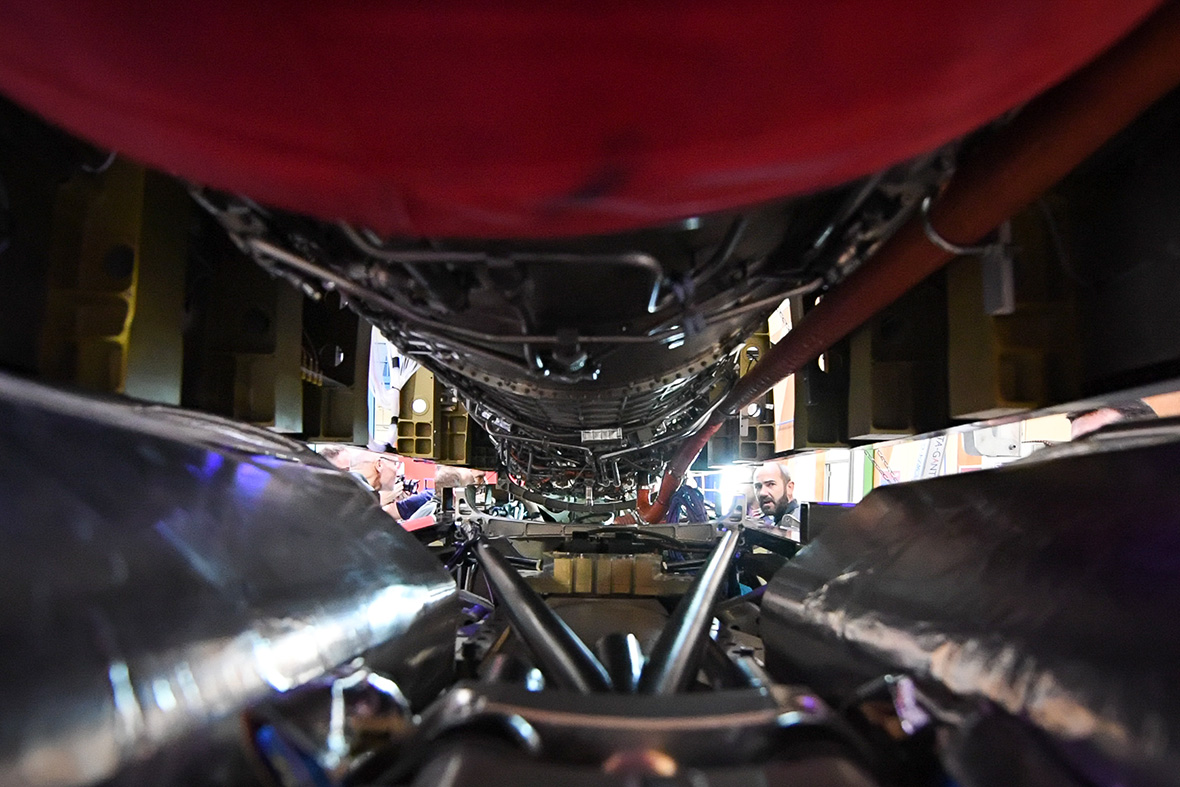 The second (lower) engine is still being evaluated and will be the key to propelling Bloodhound to over 800 mph. This engine will be a pure rocket engine and its selection and installation are now being planned.
The second (lower) engine is still being evaluated and will be the key to propelling Bloodhound to over 800 mph. This engine will be a pure rocket engine and its selection and installation are now being planned.
What next?
The team and Bloodhound have returned to their UK headquarters in Gloucestershire, UK, where the car has been dismantled and the salty desert dust has been removed from the body panels (where is that salt when we need it?).This ensures that the salt doesn’t corrode the metal sections of bodywork, the electrical connectors and their associated black boxes.
The team is now focused on raising the next round of funds needed to complete the development of the zero-carbon emission rocket needed to reach speeds of over 800mph, when the they return to the Hakskeenpan.
Bottom line…if the jet and rocket engines both work and Bloodhound somehow doesn’t quite stop as planned, Andy Green might be delivering his victory speech from low-earth orbit.
GodSpeed
